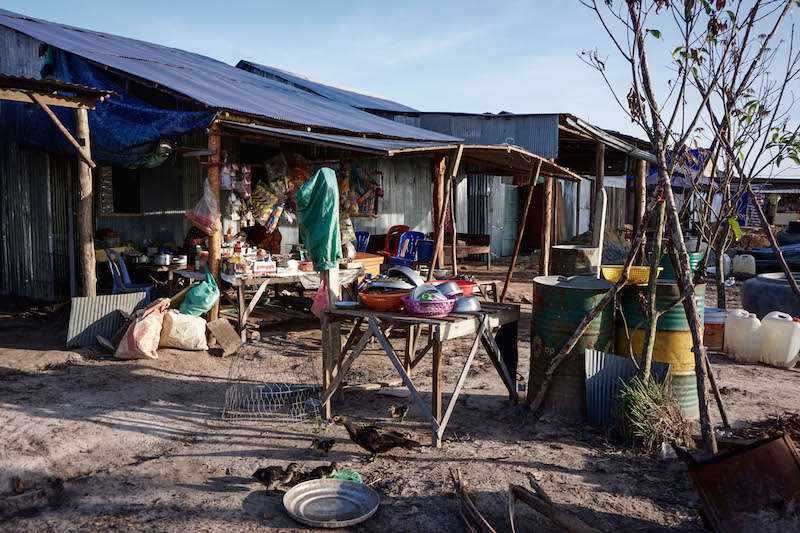SIHANOUKVILLE – Seven kilometers from the tourist site of Kbal Chhay waterfall on the outskirts of this coastal town, in a pitted tin shack that becomes too cold for a good sleep in the damp nights of December, Som Piroath, 42, says she is out of options.
“It’s really difficult,” she said last week as rain streamed through holes in her house. “Are they going to put me in prison if I say this? It’s really hard.”

Ms. Piroath makes her money from the tourists of Sihanoukville. On a typical day, she said, she takes a moto-taxi to the seaside, some 15 km from her house. Until dusk, she walks the beach, selling hats or sliced fruit. At nightfall, she pays for a moto-taxi back home.
After a day’s work, she said, she makes only enough to feed her three children.
And life only seems to be getting harder for Ms. Piroath. A month ago, the provincial government evicted her from the 20 by 40 meter plot of land where she used to live, one she bought with a $3,000 loan three years ago. Most of her neighbors were kicked off their plots as well.
It wasn’t entirely a surprise. She never had a title to the plot on the deforested hillside that the state has declared protected land. But, after a lifetime of living in rented rooms and on the back of other people’s motorbikes, the loss of the only land that felt like hers was bitter.
Mr. Piroath is part of what is set to be a rapidly expanding workforce in a beach town that the government hopes will draw 2 million tourists a year by 2020, adding 250,000 new jobs, according to a plan put forward by Tourism Minister Thong Khon at a coastal development conference last Friday.
But while officials tout the economic benefits of a coastal boom, NGOs and those living in town wonder what benefits locals will actually see—and where the families of those serving all the additional tourists will live.
“The land prices in Sihanoukville have gone up,” said Oun Sokleng, coordinator of the Starfish Project, an NGO that builds housing in the rural parts of the province.
“The poor people—the people who work on the beach, and in construction—they cannot afford them.”
Tourism officials are aware of the problem, said Ny Phally, deputy secretary-general of the National Committee for the Management and Development of the Coastal Zone.
“We have training for people who work at the beach,” he said after last week’s conference. The Ministry of Tourism hosts massage classes for women once a week, for example.
However, the Starfish Project’s Mr. Sokleng said he couldn’t see any way for those currently employed in Sihanoukville’s tourism sector to cope.
“It’s almost impossible. Rent is $40 to $100 a month,” he said. “A restaurant salary is $120 to $150. And they have children, families. I don’t think they can afford that.”
As for the plans to bring in more tourists to the province, Mr. Sokleng said he doubted it would help.
“The people who will come to work from other provinces, they will be poor. They’ll get a low salary. The benefits will go to the wealthy.”
Those like Ms. Piroath can only hope for a stable place to rest their head. Evicted from her house to a state-supplied plot too small for anything but raising a few ducklings, one of the few things she still has is the loan she took out for the house she was kicked out of.
It’s the same for her neighbors, all of whom, she said, work the beaches of Sihanoukville. This month, she said, she borrowed money from everyone she knew just to pay the bank.
As for next month? “I think about it. I think and nothing comes.”



